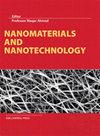新兴聚合物基纳米复合材料
IF 3.3
3区 材料科学
Q2 MATERIALS SCIENCE, MULTIDISCIPLINARY
引用次数: 1
摘要
聚合物基纳米复合材料在过去的三十年里受到了广泛的关注。低含量的有机或无机纳米填料的加入除了改善母聚合物的性能外,还为纳米复合材料提供了新的性能,同时保持了与起始聚合物几乎相同的加工性能。此外,纳米填料的高表面/体积比以及聚合物基质与纳米填料在分子水平上的相互作用导致了相界面的形成和力学、光学、电学等性能的显著变化。因此,聚合物基纳米复合材料在汽车和交通运输、生物医学、储能和发电、电子、建筑、管道、智能涂料和环境保护等不同领域具有替代现有材料的潜力。聚合物基纳米复合材料是聚合物技术的热点之一,具有广泛的应用领域。图1显示了过去十年中在最关键的应用领域中关于聚合物纳米复合材料的科学文章的分布。这些应用领域中几乎有一半被能源、涂料、环境、传感器、生物医学、包装和航空航天部门所覆盖。更有趣的是,科学出版物的时间分布显示出持续增长的趋势,这反映在新兴聚合物基纳米复合材料的特别收藏中。高分子基纳米复合材料具有防腐、抗菌、自清洁和生态友好等多种功能,这些特性在表面处理中起着突出的作用,在产品中具有优越的物理效果。当纳米级的有机或无机材料(纳米填料)被掺入聚合物基体中时,这些优异的性能得以实现。图2显示了近十年来在不同的应用领域中,制备聚合物纳米复合材料最常用的纳米填料和聚合物基质。例如,在纳米填料的情况下,碳纳米结构,如碳纳米管、石墨和石墨烯主要用于传感器和能源部门。此外,金属纳米粒子如银和金纳米粒子主要用于生物医学领域。另一方面,在聚合物基质的情况下,可生物降解的聚合物,如纤维素、聚乳酸(PLA)和壳聚糖,在包装和生物医学领域具有相关性。尽管纳米复合材料具有无限的应用潜力,但要实现从宏观尺度到纳米尺度的有效过渡,纳米复合材料的制造仍然需要克服一些挑战。例如,科学家和工程师之间强有力的跨学科互动仍然是必要的,以了解和优化结构-工艺-性能关系,实现更简单有效的颗粒剥离和分散,并使用更多可堆肥和可生物降解的聚合物降低制造成本。本文章由计算机程序翻译,如有差异,请以英文原文为准。
Emerging polymer-based nanocomposites
Polymer-based nanocomposites have received considerable interest in research for the last three decades. Besides improving the properties of parent polymer, the addition of low content of organic or inorganic nanofillers provides new properties to the nanocomposite material while maintaining almost the same processing properties as the starting polymers. Furthermore, the high surface/volume ratio of nanofillers and the interaction between polymer matrix and nanofiller at the molecular level leads to phase interfaces and notable changes in mechanical, optical, electrical properties, etc. Therefore, polymer-based nanocomposites can potentially replace existing materials in different fields such as automotive and transportation, biomedical, energy storage and generation, electronics, construction, piping, intelligent coatings, and environmental protection. Polymer-based nanocomposites represent one of the hottest topics in polymer technology with many application fields. Figure 1 shows the distribution of the scientific articles on polymer nanocomposites among the most crucial application fields in the last decade. Almost half of these application fields are covered by the energy, coatings, environment, sensors, biomedical, packaging, and aerospace sectors. More interesting, the temporal distribution of the scientific publications demonstrates a continuous growth trend reflected in this Special Collection on Emerging polymer-based nanocomposites. Among the multifunctional properties of polymerbased nanocomposites are included anticorrosive, antibacterial, self-cleaning, and eco-friendly effects, which play a prominent role for surface treatments in the contribution of superior physical effects in products. These outstanding properties are achieved when organic or inorganic materials at the nanoscale (nanofillers) are incorporated into polymer matrices. Figure 2 shows the most used nanofillers and polymer matrices in the last decade to prepare polymer nanocomposites among the different application fields. For example, in the case of nanofillers, carbon nanostructures such as carbon nanotubes, graphite, and graphene are primarily used in sensors and energy sectors. Also, metal nanoparticles such as silver and gold nanoparticles are primarily used in the biomedical sector. On the other hand, in the case of polymer matrices, biodegradable polymers such as cellulose, polylactic acid (PLA), and chitosan have relevance in the packaging and biomedical sectors. Despite the infinite potential applications, the manufacturing of nanocomposites has still to overcome several challenges for an effective transition frommacro-scale to the nanoscale. For example, a robust interdisciplinary interaction between scientists and engineers is still necessary to understand and optimize the structure-process-properties relationships, achieve a simpler and effective particle exfoliation and dispersion, and reduce manufacturing costs using more compostable and biodegradable polymers.
求助全文
通过发布文献求助,成功后即可免费获取论文全文。
去求助
来源期刊

Nanomaterials and Nanotechnology
NANOSCIENCE & NANOTECHNOLOGY-MATERIALS SCIENCE, MULTIDISCIPLINARY
CiteScore
7.20
自引率
21.60%
发文量
13
审稿时长
15 weeks
期刊介绍:
Nanomaterials and Nanotechnology is a JCR ranked, peer-reviewed open access journal addressed to a cross-disciplinary readership including scientists, researchers and professionals in both academia and industry with an interest in nanoscience and nanotechnology. The scope comprises (but is not limited to) the fundamental aspects and applications of nanoscience and nanotechnology
 求助内容:
求助内容: 应助结果提醒方式:
应助结果提醒方式:


